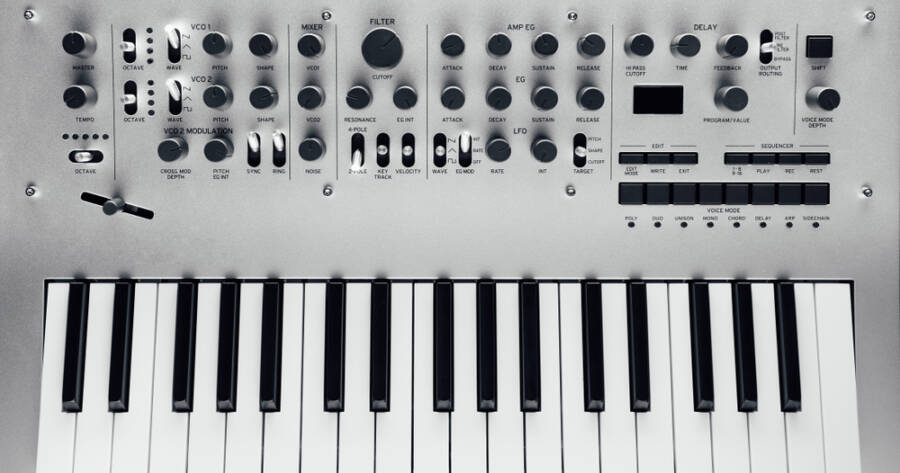Once the domain of deep-pocketed sound designers and boutique collectors, modular synthesizers are now more accessible than ever. A growing number of affordable systems are bringing the joy of patch cables and hands-on sound design to everyday musicians. Across the United States, bedroom producers, electronic artists, and even guitarists are discovering how modern modular gear can offer professional sound design possibilities without the intimidating price tag or learning curve of the past.
A Revolution in Accessibility
For decades, modular synthesis carried an aura of exclusivity. Vintage systems like Moog, Buchla, and Serge were both expensive and rare, reserved mostly for academic labs or established studios. The past few years, however, have seen a quiet revolution. Compact, modular-friendly formats like Eurorack have opened the door for smaller, less costly modules that still deliver powerful analog tone.
Manufacturers such as Cre8audio and Pittsburgh Modular have focused on offering high-quality modules at approachable prices. Even larger brands have introduced “starter” systems that allow users to experiment without committing to massive racks. This democratization of modular gear has created a growing subculture of independent musicians who can now build custom synth setups piece by piece.
What once cost thousands of dollars and filled a wall can now fit neatly on a desk. The experience of patching cables, modulating signals, and sculpting sound has shifted from professional labs to bedrooms and small studios.
From Intimidating to Inviting
One of the biggest changes in this new wave of modular synthesis is the emphasis on simplicity. Many modern systems are designed to be plug-and-play, with intuitive layouts and clear labeling. Beginners no longer need to study signal flow theory before making their first patch.
Starter systems, often referred to as “semi-modular,” have become a gateway for newcomers. Instruments like the Moog Mother-32 or the Arturia MiniBrute 2S, for example, come ready to play out of the box but allow users to explore modular patching when they’re ready. These systems blend analog warmth with digital flexibility, offering everything from deep bass to experimental soundscapes.
Software integration has also helped. Programs like VCV Rack, a no-fee virtual modular environment, let users learn the basics of patching before investing in hardware. Many musicians now experiment digitally, then translate their favorite patches into physical form using real modules. This hybrid approach makes the world of modular synthesis far less daunting — and far more inviting.
The Community Behind the Cables
Modular synth culture has always been about experimentation, but it’s also about community. Online forums, YouTube channels, and local synth meetups have become valuable spaces for learning and collaboration. Musicians share patch ideas, review budget modules, and offer advice on how to expand a setup without overspending.
This sense of community plays a crucial role in keeping the modular world open and friendly. Newcomers can ask questions without judgment, and experienced builders often help guide them through technical challenges. Many small American companies thrive on this grassroots energy, producing handcrafted modules that focus on creativity rather than mass production.
The shared enthusiasm has even led to “patch challenges,” where musicians attempt to create specific sounds using limited gear. These creative exercises show that innovation doesn’t depend on money — it depends on imagination.
Analog Sound for the Digital Age
What continues to draw people to modular synthesis, even in the era of AI music tools and virtual instruments, is its physicality. Turning knobs, swapping cables, and hearing immediate feedback engages a different kind of creativity than clicking through menus. Each patch is unique, unpredictable, and often impossible to recreate exactly.
For digital producers, adding a small modular setup can bring warmth and texture to an otherwise software-based workflow. A single analog oscillator or filter can introduce organic movement that’s hard to replicate digitally. Many musicians now combine hardware modular systems with digital audio workstations (DAWs), blending the best of both worlds — analog character with digital precision.
This blend of tactile sound design and accessible technology has redefined what “modular” means. It’s no longer a luxury; it’s a hands-on approach to music-making that anyone can explore.
Growing Sustainably in Sound
Another appeal of modular synthesis is its incremental nature. You don’t need to buy everything at once. Many musicians start with a small rack or semi-modular unit and add modules over time as they learn. This steady, deliberate growth encourages understanding rather than impulse buying. It also ensures that each piece of gear feels purposeful — part of a unique, evolving instrument rather than a collection of gadgets.
Musicians often describe the experience as meditative. Building a sound patch from scratch teaches patience, curiosity, and respect for the process of sound creation. It’s less about chasing trends and more about exploring the physics of tone and rhythm directly with your hands.
Creativity Without the Barrier
The new generation of modular synths has changed what it means to make music at home. By lowering costs and simplifying design, manufacturers and communities alike have made modular sound design approachable for everyone — not just professionals or collectors.
What’s most exciting isn’t just the affordability; it’s the creative freedom. Every knob twist and cable connection invites discovery. In a world where much of music creation has moved to screens and presets, modular synthesizers offer something refreshingly human: a return to exploration, imperfection, and the joyful noise of hands-on creativity.

